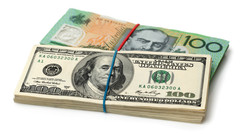On Monday, the U.S. dollar declined against the euro, prolonging last week's downturn. This fall is largely due to the U.S. Federal Reserve's indications last week that interest rate reductions may be on the horizon for the next year.
Impact of Bank of Japan's meetings on the U.S. Dollar
The U.S. dollar managed to gain ground against the yen as the Bank of Japan (BOJ) embarked on a pivotal two-day meeting. This meeting is expected to be a key determinant in marking the end of the BOJ's ultra-accommodative interest rate stance.
The Federal Reserve's Stand on Interest Rates
Last week, speculations ran high that the Federal Reserve would decrease its benchmark overnight interest rate by a quarter percentage point in March. These predictions followed the U.S. central bank's decision to maintain its policy rate in the 5.25%-5.50% range and the officials' forecast of a three-quarters percentage point in cuts for next year.
The European Central Bank's Perspective
Conversely, European Central Bank policymakers do not plan to alter their communication on the necessity of elevated interest rates before their March meeting. This might make any interest rate reduction before June challenging, according to sources well-acquainted with the subject.
U.S. Dollar Strength and Other Currencies
The strength of the U.S. dollar against six key rivals dipped 0.07% to 102.55 per the dollar index, while the euro saw a 0.22% gain against the dollar. Despite some volatility in recent weeks following the BOJ's assurance of continuing its negative interest rate policy, the yen managed to sustain its recent highs and value against the dollar.
Prospects of the British and Digital Currencies
The pound experienced a mild decline against the dollar, but the potential for higher interest rates in Britain next year compared to other leading economies lent some resiliency to the British currency. Meanwhile, Bitcoin held steady for the day at $41,612.





